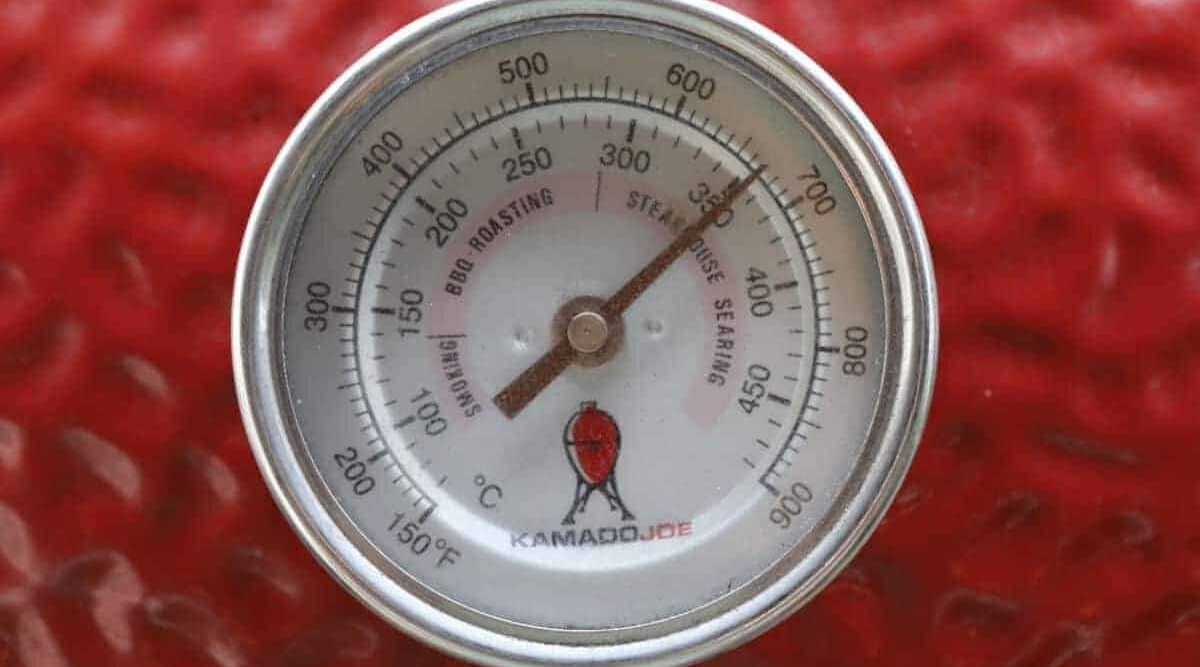
It takes skill, experience, and practice to control the temperature of your grill or smoker accurately and consistently for quality cooking.
And it’s trickier with charcoal grills because you’re dealing with live coals or wood that can be different shapes and sizes, burning at different rates and temps.
However, only by controlling the temperature in your charcoal grill or smoker can you deliver consistent results and can you eliminate over or undercooked food.
Understanding the basic science of how the fire, heat, and air works will make it easier to configure your grill and control it with the vents and dampers.
Don’t get discouraged here, I’m not going to bore you with some technical jargon, just some simple explanations on how they work so that you can control the flame in exchange for good flavorful food that comes from mastering the temps in your grills.
So let’s get going, here’s how to control the temperature in your charcoal grill or smoker.
Jump to:
- 1 The “Fire Triangle” And Your Grill
- 2 The Three Essential Ways to control Grill Temperature
- 3 1) Control Your Fire by Feeding It or Letting It Starve
- 4 2) Control the Air Flow with the Intake and Exhaust Vents
- 5 3) Check the Distance from the Meat to the Heat
- 6 Trouble Shooting Your Grill’s Heat
- 7 Controlling Temperature is the Key to Grilling Success
The “Fire Triangle” And Your Grill
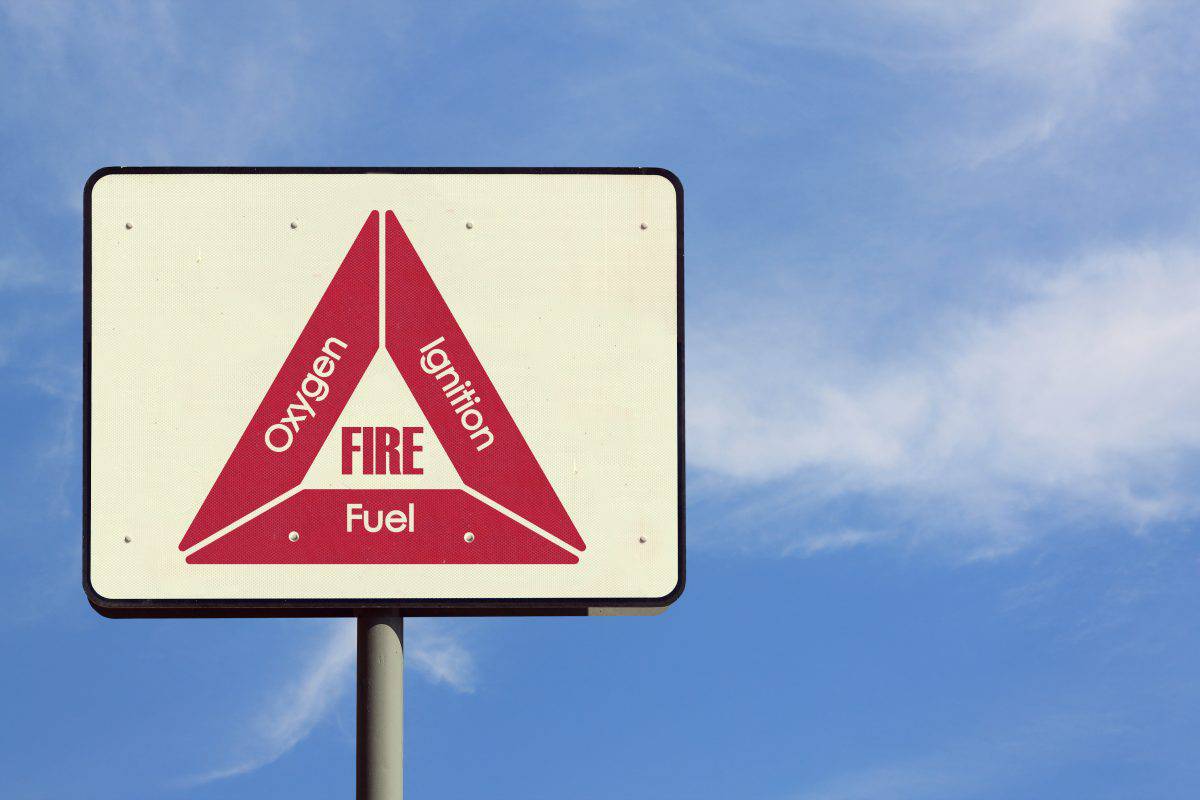
Whenever we fire up the grill, we want it to stay lit, and for this you need three elements:
- Oxygen
- Heat
- Fuel
These are the three sides of what’s known as “The Fire Triangle.” Take one of the sides away, the flame will die.
Remember, fire is a caged beast and the more you feed it, the bigger it grows. A match flame can grow into a wildfire when it has unlimited oxygen and fuel.
It’s your job as the grill master to tame the flame.
With a charcoal grill, you have the fuel and oxygen sides of the fire triangle to control. When done right, you can dial in your grills temperature perfectly, so you can cook consistently and follow recipe timings with ease.
The Three Essential Ways to control Grill Temperature
Following are the three areas you can control to manage the temperature so that your meat will cook perfectly every time.
1) Control Your Fire by Feeding It or Letting It Starve
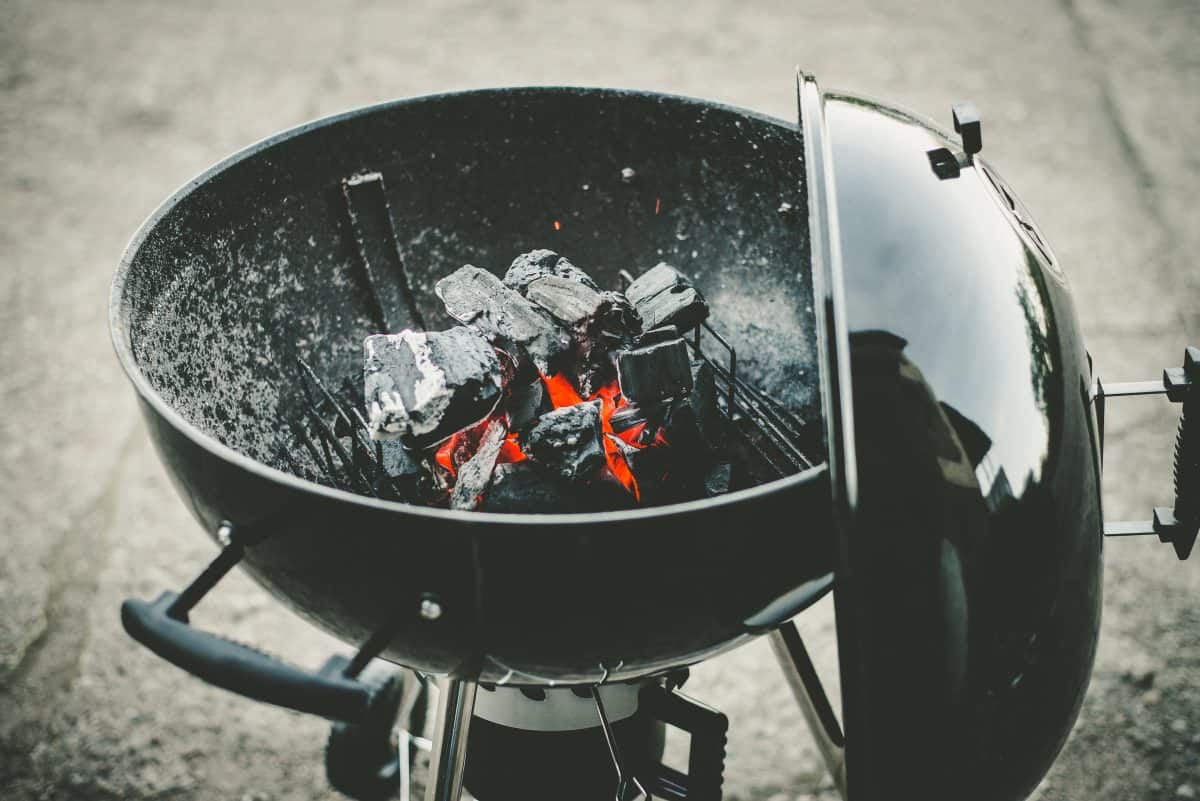
Naturally, the more lit fuel there is in your grill, the more heat it can produce.
If the fire burns the same amount of fuel throughout the grilling or smoking time, it will allow you to adjust the temperature more easily.
So when you are grilling, use a charcoal chimney to measure out the same amount of fuel each time you cook.
Learn the different temps you can achieve for different amounts of fuel, both lit and unlit that you place in your grill.
Experiment and find out the temps you can easily maintain — and for how long — with your particular grill for the following scenarios:
- Half chimney of lit coal dumped into an empty grill (no unlit coal.)
- Half chimney of lit coal dumped onto a half chimney of unlit coal
- Half chimney of lit coal dumped onto a full chimney of unlit coal.
- Full chimney of lit coal dumped into an empty grill (no unlit coal.)
- Full chimney of lit coal dumped onto a half chimney of unlit coal.
- Full chimney of lit coal dumped onto a full chimney of unlit coal.
More Fuel, More Heat
If you use briquettes as fuel, Kingsford has some recommendations to set up your fire and quantity of briquettes for various levels of heat. We also have a guide on the amount of charcoal you should use for different purposes.
They estimate that a typical chimney fire starter holds 100 briquettes. A full chimney of burning briquettes will give you temperatures of 450 °F to 550 °F right away. If you want lower temperatures for longer cooks, start with less and feed the fire as you go.
Another thing you want to consider when controlling the fuel is the depth or how many layers of briquettes in the grill.
When you spread the coals in a single even layer, they will burn very hot for a short time and then burn out quickly. Adding more coals or depth gives you a longer, more consistent burn time.
Configure your Fire to Control the Temperature
The fire set up for hot grilling is very different from long, slow cooks for smoking.
If you’re looking for a hot grill for steak and burgers, dump in a lot of briquettes and light them all at once.
For a low and slow fire to smoke briskets, ribs, and butts, light only a few briquettes and place on unlit fuel, so that they ignite the rest slowly over a longer time.
You’re controlling the temperature by the amount of fuel burning at any given time. Read more about fire building techniques in our article, The Minion Method.
For direct-heat or high-heat grilling and searing, use a full chimney of briquettes. Make a layer of briquettes in the bottom of the grill and pour the lit briquettes on top. This will give you at least 550 °F long enough to cook a couple of thick steaks or a few orders of burgers.
For low heat smoking or cooking, there are two ways to set up your grill that accomplish the same result:
- The first is called the “S” or snake method where you arrange your briquettes in an “S” shape or in a “C” shape around the perimeter of the grill if it is small.
- The second is a “2-zone” fire using indirect heat. You place the charcoal or briquettes on only one-half of the grill and light just a few, the same as the “S” fire I just mentioned.
With either fire setup, you light only a few briquettes on one end, and they will slowly burn their way around to the other end. You’re essentially slowly feeding the fire instead of burning everything at once.
This helps to control the temperature for longer cooking. You’ll be able to maintain temperatures of around 225 °F (107 °C) to 250 °F (121 °C) for hours at a time.
Adding Fuel to Feed the Beast
During long cooks, add more fuel to maintain the temperature. It’s always best to add burning coals rather than unburned, so pre-light them in your charcoal chimney.
This way, there won’t be any lag time getting the fire going again and the grill will recover faster after the door/lid is opened and then closed.
2) Control the Air Flow with the Intake and Exhaust Vents
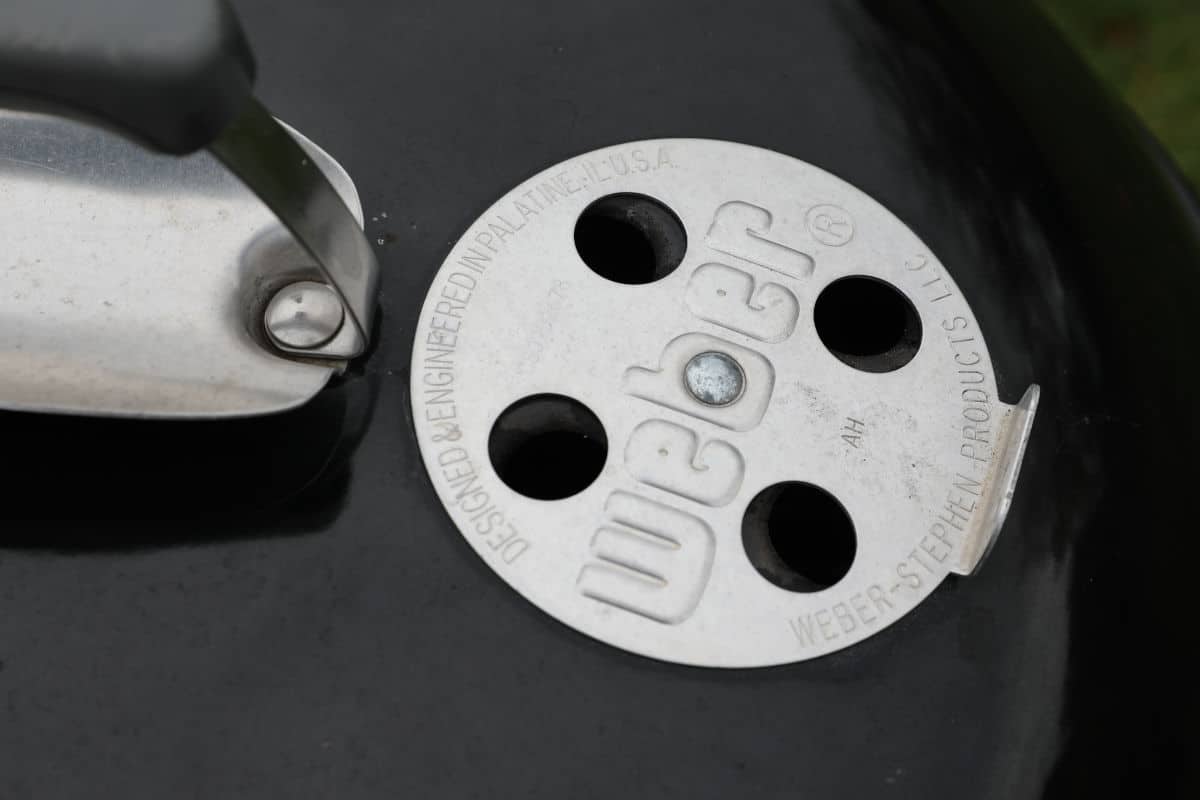
For the coals to stay lit, they need air (oxygen).
The more air that rushes in, the more intense the fire gets. To reduce the heat, you just do the opposite, decrease the amount of air.
Air comes in through the bottom vents or dampers. And as heat rises, the heat, smoke and burned gases escape through the top vent, sometimes call the exhaust vent or smokestack. This, in turn, draws in more air from the bottom that oxygenates the flames further.
By controlling this airflow with your vents, you can quite accurately control the rate of burn, and hence precisely control the temperature in your grill or smoker.
How To
Start with your bottom or intake vents wide open and your top vents half open.
Once your fire has settled down, close down your bottom vent to about half.
Using a reliable pit probe, (not the one that came with the grill!) monitor the temp of your grill as it climbs toward your target. A good wireless meat thermometer is the recommended tool for the job.
If your temperature doesn’t reach the heights you’re after, open the bottom vent slightly to increase it. If the temp gets too high from your target, close the bottom vent a bit. Wait for 10 minutes and check the progress. (It takes a good 10 minutes for any changes to take effect.)
Try to concentrate on using only the bottom vent for control, otherwise it can be a hard juggling act. The bottom/intake vent will make the most difference. And remember, the top vent must be open to let out the burned gases, and to help draw in air from the bottom. If you close the vent, you shut off one leg of your fire triangle and smother the fire.
With experimentation, you will find the sweet spot to set your vent openings. Make a note of the ideal settings for the dampers using a permanent marker to save time in the future.
Of course, you can buy temperature controllers like the flame boss or BBQGuru that can gauge and automatically control the amount of air getting in the grill to dial in your temperature accurately and completely hands-off.
It takes the guesswork (and fun) out of maintaining a consistent temperature. But you still need to know how to manage them manually.
Note: For a detailed look at and comparison of two of the best ATCs, check out our article on Flame Boss vs BBQGuru automatic temperature controllers.
3) Check the Distance from the Meat to the Heat
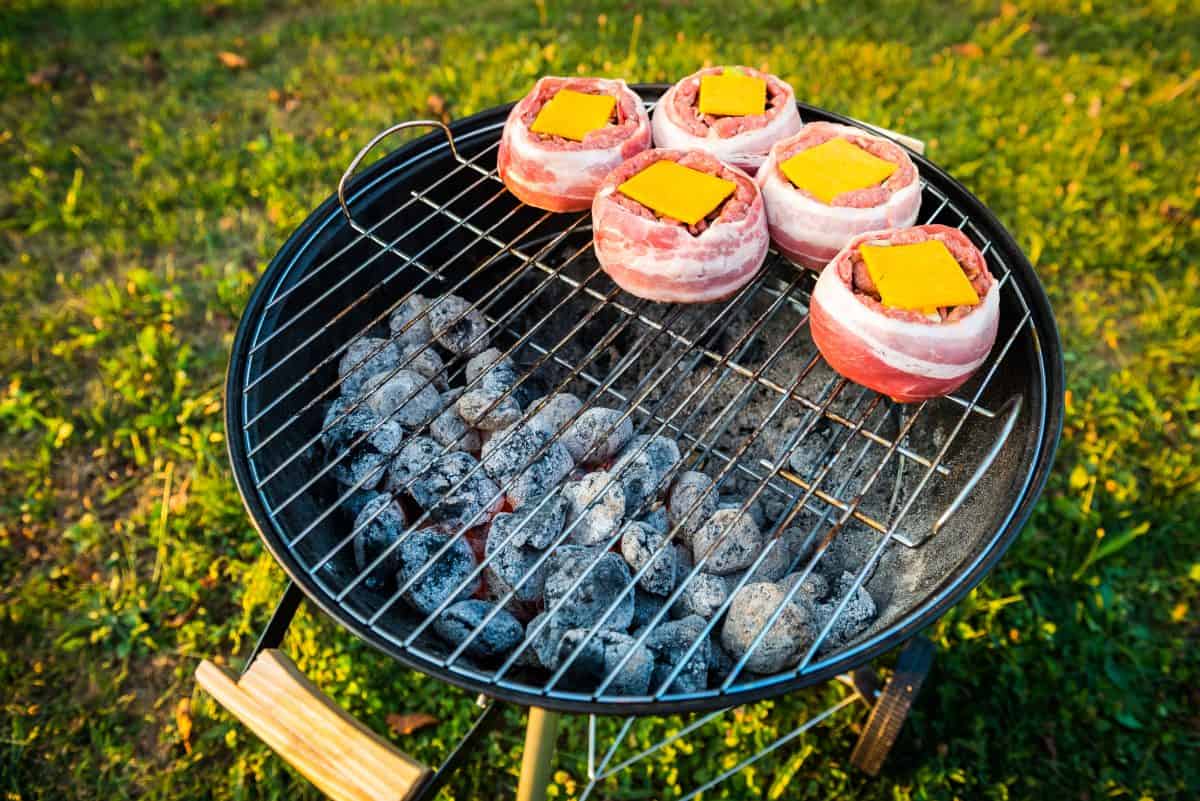
Once the temperature stabilizes inside the grill or smoker, there is one more thing to consider, and that is how close your meat is to the fire.
With an offset cooker, this is not a problem because the fire is not near the meat. But with small smokers and grills, this can be a problem.
Although the air temperature reads a perfect 225 °F (107 °C) inside, if your meat sits close to the fire, it can quickly overcook on that side.
Be aware of how close the heat source is to the meat. You can rotate the meat every 15 to 20 minutes to avoid burning.
Another method is to use a heat shield. These come as standard on some of the best charcoal grills. But don’t worry if yours doesn’t have on, the solution is cheap and easy.
Simply make a double layer of foil and position it under and on the side of the meat facing the coals. This helps to reflect direct radiant heat away, leaving your food to cook with the convective heat only, which is the temperature of the air alone that you’ve measured to be correct.
Trouble Shooting Your Grill’s Heat
Controlling the temperature can be challenging especially with lower priced grills and smokers.
Typically, they “leak” adding air from around the doors, screw holes or seams. You can reduce the leakage by adding gasket seals to the door or cover and fill gaps or holes with a high heat sealer.
If you don’t want to bother sealing everything tight, just think of these as a permanent vent opening and adjust the other vents accordingly.
If you’re having a problem getting up to the right temperature, the grill may not be getting enough air. Typically, that means ash build up in the bottom vent.
Always empty ashes before starting a new fire. Make sure the coals aren’t directly on the vents but supported above them on a grate. Replace the grate if it burns through.
Also, make sure you thermometers are properly calibrated and reading the correct temperatures. There’s nothing worse than doing everything right, but failing because your thermometer doesn’t read right.
And, one more thing to check. Mice and birds can make nests in the grill or smokestacks, especially if they are tipped sideways for storage, and you don’t grill very often. Hey, it happens, or I wouldn’t mention it.
If you’re cooking in windy or winter conditions, you may want to invest in an insulating blanket or build a windbreak around your grill. Especially cheaper grills and smokers lose a lot of temp due to being badly insulated with thin walls, and cold, wet and windy weather can make reaching and maintaining temps very difficult.
Controlling Temperature is the Key to Grilling Success
Controlling the heat is what grilling is all about. Whether you flip burgers and steaks at the right time or slow smoke ribs for 10 hours, it’s all about how much heat is in the meat at any given moment.
Tips for maintaining a consistent fire:
- Use a quality grill thermometer. Wireless thermometers alert you remotely if the grill’s temperature is outside of parameters.
- Don’t open the lid unless you have to. “If you’re looking, you ain’t cooking!” The heat escapes and more air rushes in causing a drop, and then a spike in temperature as the extra oxygen is consumed.
- Make large temperature adjustments using the intake or bottom vents, small adjustments using the top vent.
- Don’t adjust the top vents too close to closed, unless you want to kill the fire. They must allow gases from burnt fuel to escape.
- Seal gaps and holes around doors, lids as much as possible to give you better control using the vents.
- Use lit, glowing coals when adding more fuel, not unlit coals.
Cooking with charcoal and briquettes is all about controlling the heat with the amount of fuel and air. Once you master your grill’s peculiarities and know how to set it, you will be able to achieve consistency in your cooks. You can check out my complete guide to using a charcoal grill for even more tips and techniques to master this form of cooking.
Happy grilling!


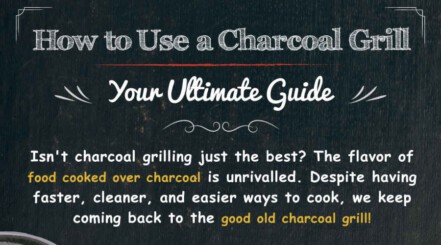
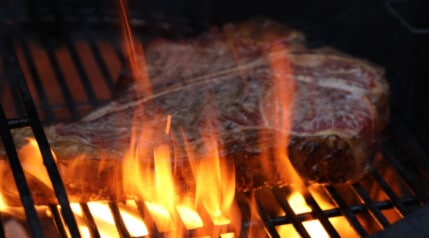
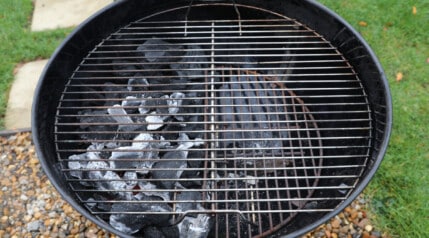
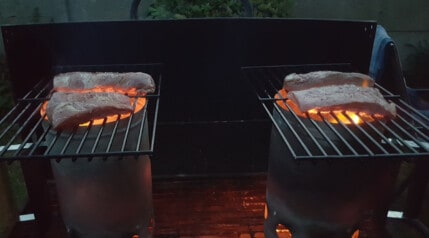
This was awesome information. I have been grilling for years and you just taught me how to control my charcoal grill temperature and why my grill gets so uncontrollably hot. Thank you